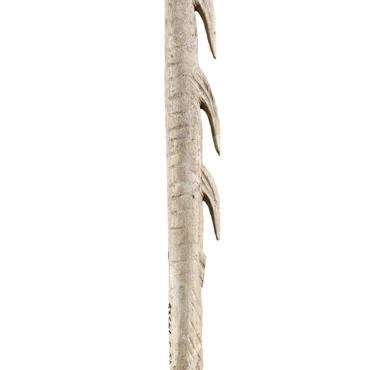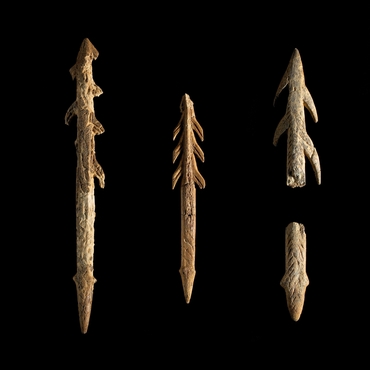
- Home
- Discover the sculptured rock shelters
- Life 15 000 years ago
- Equipment
- Weapons
The weapons produced by the Magdalenians were mainly used for hunting. Flint spear tips and sagaie points are found in abundance, but their wooden shafts have not survived. Made of antler or ivory, the points took on various shapes, depending on the era and the region (round, oval, half-round, rectangular, etc.). The base may be solid, single-bevelled, double-bevelled or even forked, suggesting many different means for attaching the shaft. Flint shards or small stone points (retouched bladelets) were sometimes stuck into grooves and sealed with resin.
The propulsion device, of which only the hooks – fashioned out of antler or tusk – survive, are richly decorated for the most part. They gave great power and accuracy when thowing sagaie, which was particularly useful when hunting large animals in open landscapes such as those existing in the Magdalenian era. In contrast, we have no formal evidence that bow hunting existed for these periods.
In the late Magdalenian, another throwing weapon appeared: the harpoon, which was distinguished by its removable antler tip. It had lateral barbs that varied in number and shape and were placed on one or both sides. The base had lateral projections that were used to attach the harpoon to the shaft. Harpoons were supplemented with gigs – small, pronged objects that were supposedly used in hunting birds.




